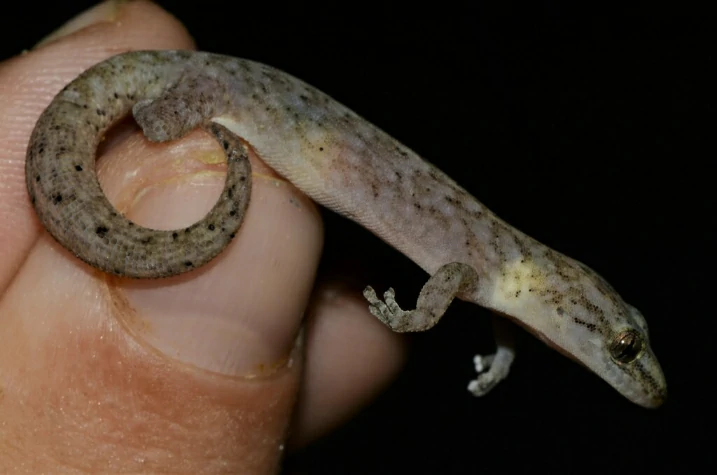Geckos are famous for their climbing skills and their ability to drop their tails when danger shows up. But if you’ve ever seen a gecko suddenly go completely still and unresponsive, you might wonder if it’s actually playing dead, or if something else is going on.
Yes, some geckos do play dead to survive. When they feel threatened and can’t get away, they’ll go completely limp and motionless to trick predators into thinking they’re already dead. This behavior, called thanatosis, can last anywhere from a few seconds to several minutes.
Not all geckos do this, but it’s common enough that you might notice it with a pet gecko or one you come across in the wild. It’s just one of several tricks geckos use to survive alongside tail dropping, camouflage, and loud alarm sounds.
How Geckos Play Dead
When a gecko plays dead, it’s not just standing still. The whole act is actually quite dramatic.
The gecko will suddenly go completely limp, often flipping onto its back or side. Its eyes might stay open or close, and it won’t react to touch or movement around it.
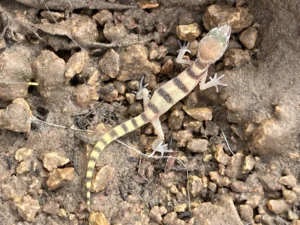
Some geckos can hold this frozen state for a surprisingly long time.
If you pick up a gecko that’s playing dead, it feels like holding a lifeless body. There’s no tension in the muscles, no gripping of your fingers, no attempt to escape.
It’s fully committed to the act, almost like it’s trying to convince even the most stubborn predator that it’s really gone.
Some geckos go even further, letting their limbs dangle loosely and keeping their mouths slightly open. It’s a dramatic little performance for something so small and fragile.
Why Do Geckos Play Dead?
Playing dead works because many predators ignore prey that isn’t moving. Most hunters are wired to chase things that run, flinch, or fight back.
When a gecko suddenly goes limp, a predator might assume it’s already dead. Dead animals can carry disease, rot fast, or taste bad, so many predators leave them alone.
This gives the gecko a chance to survive. If the predator loses interest and moves on, the gecko can suddenly “come back to life” and dash for safety. It’s like hitting a pause button on danger, just long enough to slip away unnoticed.
Sometimes, the gecko’s stillness also confuses predators. A bird, snake, or bigger lizard might hesitate, unsure what to do with something that seems lifeless, giving the gecko a split-second advantage.
When Do Geckos Use This Defense?
Playing dead isn’t the first thing a gecko does when danger shows up. They’d much rather run away or hide.
Geckos usually only play dead when they’re cornered and can’t escape. If a predator grabs a gecko or it’s trapped in a small space with no way out, that’s when this behavior kicks in.

Some species are more likely to play dead than others. Smaller geckos or those facing predators that rely on movement to detect prey tend to use thanatosis more often.
Bigger or more aggressive species might skip the act, using speed, tail dropping, or bluffing instead.
Other Ways Geckos Protect Themselves
Playing dead is just one trick in a gecko’s survival toolbox. They have several ways to avoid becoming someone’s dinner.
Tail dropping is the most famous. When a predator grabs a gecko’s tail, it breaks off and keeps wiggling on the ground.
This distracts the predator while the gecko escapes. The tail grows back later, though it usually looks shorter or a bit different in color.
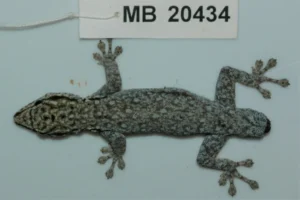
Many geckos also change color to blend in with their surroundings. This camouflage helps them hide in plain sight, especially during the day when predators are looking from above.
Greens, browns, and speckled patterns all help them vanish into the background.
Some species puff up, flatten themselves against a surface, or open their mouths wide to look bigger and scarier. Others make loud barks or clicks to startle predators or rivals.
Geckos mix stealth, distraction, and dramatic performance depending on the situation.
How Long Do Geckos Stay “Dead”?
How long a gecko plays dead depends on how threatened it feels. If the danger is small or passes quickly, it might “wake up” after just a few seconds.
But if the threat sticks around, a gecko can stay motionless for several minutes. Some species can maintain this frozen state for over ten minutes if needed.
You’ll know a gecko is coming out of its death act when you see tiny movements, like a toe wiggle, an eye blink, or a slight body shift. Then, just like that, it flips over and dashes away, usually faster than you’d expect.
This slow-to-fast transition is important. A gecko can stay almost invisible until it’s safe enough to make a break for it.
Is Your Pet Gecko Playing Dead or Actually Sick?
If your pet gecko suddenly goes limp, it can be scary. You need to know whether it’s playing dead or actually unwell.
A gecko that’s playing dead will usually be in good shape and “wake up” within a few minutes if left alone in a calm, safe space.
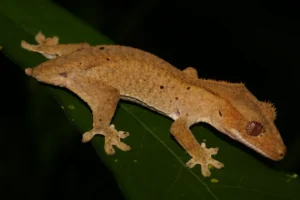
Its body temperature will feel normal, and there won’t be obvious signs of injury or illness.
A sick or dying gecko is different. Limpness usually comes with other warning signs: sunken eyes, visible bones from weight loss, discharge from the mouth or nose, or weird breathing.
Health problems often show multiple symptoms together.
If your gecko stays unresponsive for more than 10–15 minutes or shows other concerning signs, take it to a reptile vet. It’s always better to be safe than sorry.
What to Do If Your Gecko Plays Dead
If your pet gecko plays dead, leave it alone. Don’t keep poking it or trying to “wake it up.”
Put the gecko back in its enclosure if it’s not already there, and make sure the environment is calm and quiet. Turn off bright lights and remove anything it might see as a threat, including yourself.
Give it time and space. Most geckos will come out of the act on their own within a few minutes.
After it recovers, think about what might have triggered the response. Was it handled too much? Was something in its environment stressing it out? Reducing stress can help prevent future episodes.
Not All Geckos Play Dead
Playing dead isn’t something every gecko does. Some species do it regularly, while others never do.
Leopard geckos and crested geckos, two popular pet species, don’t usually play dead. If you see one go limp, it’s more likely a health problem than a defense behavior.
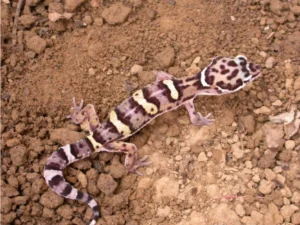
Smaller wild geckos are more likely to use thanatosis when cornered. If you’re not sure whether your gecko species plays dead, check species-specific information before assuming it’s just acting.
The Science Behind Playing Dead
Playing dead is called thanatosis, and it’s not unique to geckos. Many animals use this trick, from opossums to some insects, birds, and fish.
Scientists think this behavior evolved to give prey one last chance at survival when all other options fail. Studies show thanatosis works surprisingly well against predators that rely on movement to find food.
The behavior seems instinctive rather than learned. Even young geckos that have never faced a predator may suddenly go limp when threatened. It’s built into their survival toolkit.
Conclusion
Geckos do play dead, though not every species uses this trick. When a gecko feels completely trapped, it might go totally limp to trick predators into thinking it’s already dead.
This behavior, called thanatosis, usually lasts only a few minutes before the gecko “comes back to life” and makes its escape. If your pet gecko plays dead, the best thing you can do is give it space and let it recover on its own.
But remember, a limp gecko could also be sick or injured, especially if it doesn’t recover quickly or shows other signs. When in doubt, get your gecko checked by a vet who specializes in reptiles.
Geckos may be small, but they’re full of clever tricks, playing dead is just one of the many ways they’ve evolved to survive in a dangerous world.
Hi, my name is Ezra Mushala, i have been interested animals all my life. I am the main author and editor here at snakeinformer.com.

